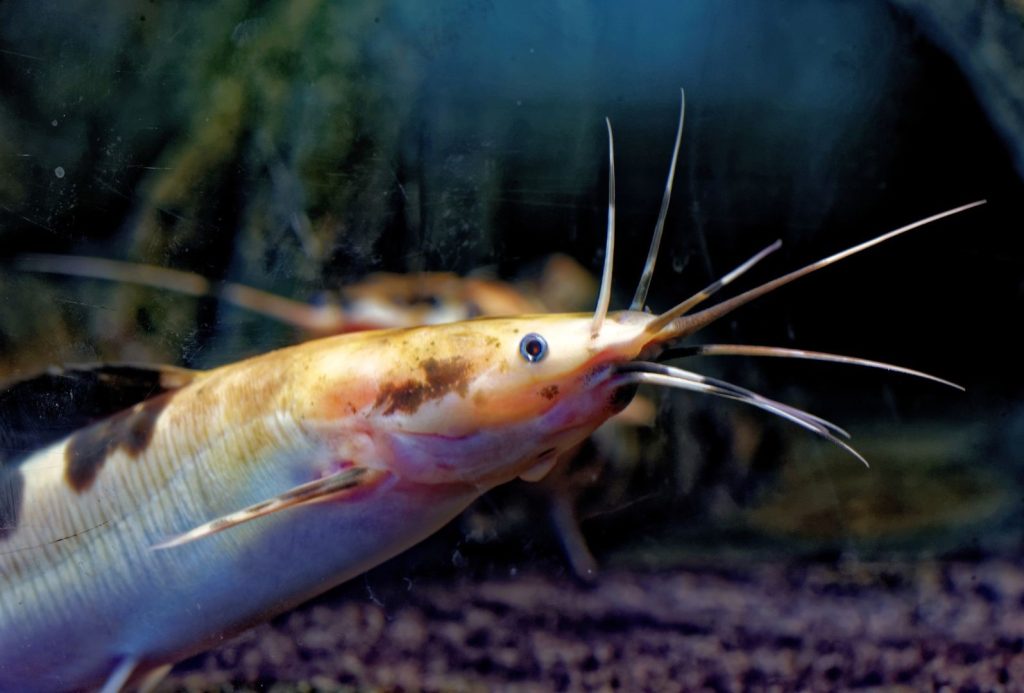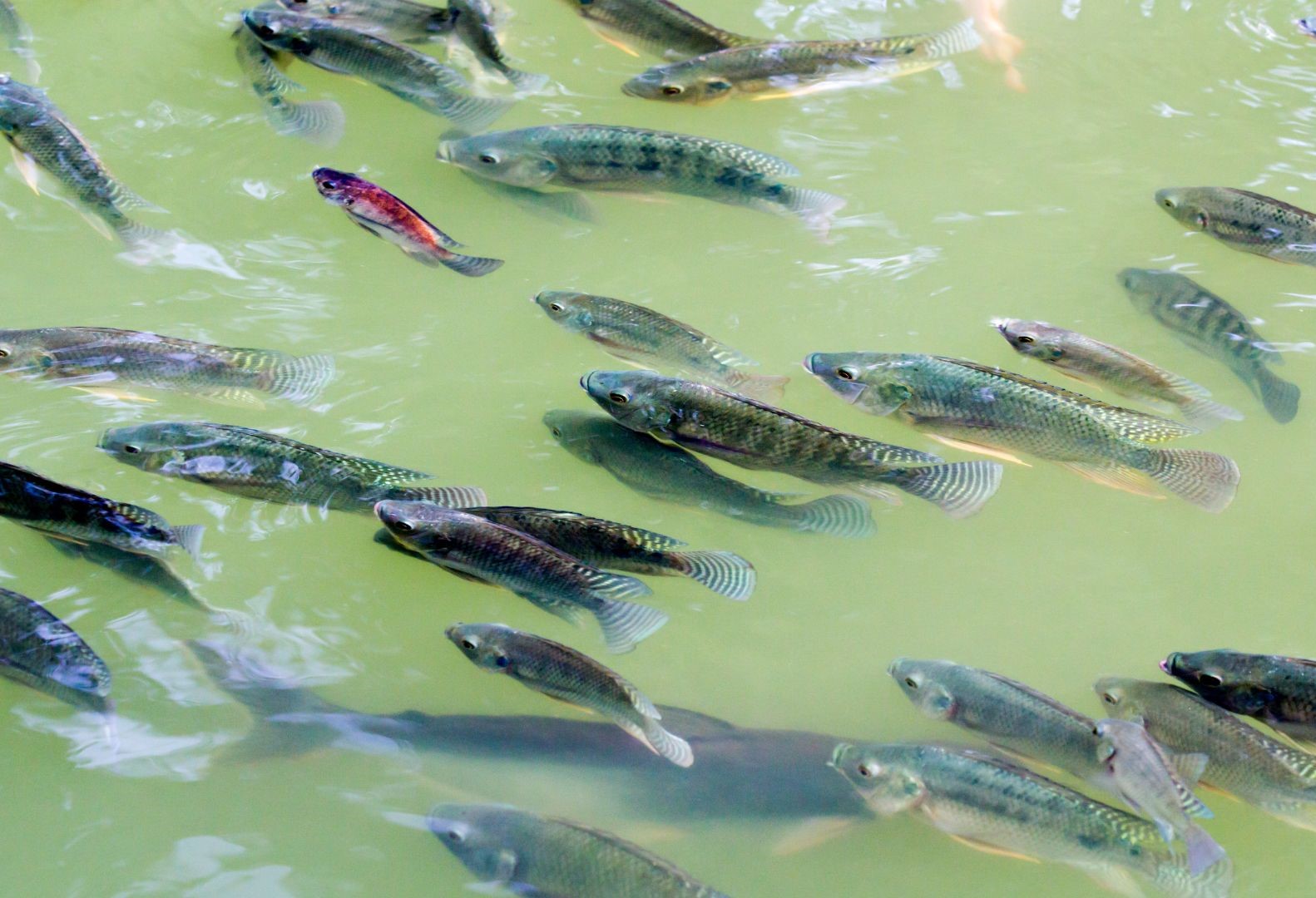Control Nile Tilapia Stocks in Polyculture system using African Sharptooth Catfish
Concept of Polyculture Fish Farming
Polyculture often involves stocking species with different dietary habits and habitat preferences. However, most polyculture systems go at least a step further, seeking to take advantage of synergies such as using one species’ waste to support production for another species(s), directly or indirectly. The concept of using waste from one aquatic species to feed another has attracted the attention of aqua culturalists in recent years, especially regarding the issue of improving water quality in aquaculture areas (production systems). Another advantage of this approach is improving the quality of wastewater from aquaculture facilities to minimize negative impacts on surrounding river basins. Global Fisheries Alliance, January 1, 2007 Charles G. Lutz, PhD. Global fish hunger will nearly double by 2050 due to wealth and growing populations, according to one assessment that predicts demand will be driven by an increase in farmed seafood. Global fish consumption has doubled since 1998 (New Scientist, Adam Vaughan, September 15, 2021).
Global fish hunger will nearly double by 2050 due to wealth and growing populations, according to one assessment that predicts demand will be driven by an increase in farmed seafood. Global fish consumption has doubled since 1998 (New Scientist, Adam Vaughan, September 15, 2021). Aquaculture systems in sub-Saharan Africa are still dominated by large-scale commercial farms, supplying high-value fish to high- and middle-income urban consumers (Aquaculture 2021). Although there is evidence that small-scale fish farmers can improve food security and household nutrition through the direct sale and consumption of fish, most farmers continue to face challenges. Difficulty in consistently and successfully farming fish (particularly tilapia)., (June 7, 2017, SAST John Bolton, Aquaculture in sub-Saharan Africa).
Origin, traits, and significance (uses) of Nile Tilapia and African Catfish
The African catfish (Clarias gariepinus) is a nocturnal predatory fish. It will prey on small birds and fish, molluscs, invertebrates, or even fish spawns. In times of scarcity, the catfish can even survive on plants. Catfish are solitary animals, and they claim their own territories. In dry periods, they tolerate other catfish and can survive with other catfish in the tiniest areas in the small mud pools that remain from the dried-up rivers. The African catfish is a nocturnal predatory fish. It will prey on small birds and fish, mollusks, invertebrates, or even fish spawns. In times of scarcity, the catfish can even survive on plants.

African catfish (Clarias gariepinus)
Nile tilapia (Oreochromis niloticus) originated from Africa and is one of the foremost prevalent fishes utilized in aquaculture due to its capacity to endure a wide range of natural conditions, adaptable environment prerequisites, regenerative procedures, fast development, and forceful and omnivorous bolstering propensities. The Nile tilapia (also known as mango fish, nilotica, or boulti ) has distinctive regular vertical stripes extending as far down the body as the bottom edge of the cordial fin with variable correlation. Adults reach up to 60 cm (24 inches) in length and up to 4.3 kg (9.5 lb). It leaves for up to nine years. Nile tilapia may experience a wide extend of temperatures with solid regular warm varieties, extending from warm (28–34°C) to “cold” (22–26°C) seasons or extraordinary situations such as elevation lakes with steady “cold” temperatures (17–24°C) or aqueous hot springs (over 40°C). These characteristics permit Nile tilapia (Oreochromis niloticus) to be an effective invasive species that has become one of the two most widely introduced fish species (De Silva et al., 2004, Peterson et al., 2005).
Published studies have demonstrated that Nile tilapia has effectively colonized most zones of the world. The invasion of Nile tilapia can cause environmental issues in a few ways:
1) Nile tilapia, for the most part, can outcompete local species for nourishment and living spaces, which diminishes the local fish populations due to competitive relocation.
2) Nile tilapia causes the termination of local fish species by preying on eggs, fry, and little fish of other species (Russell et al., 2012,).
3) Nile tilapias alter photosynthesis and the generation of the aquatic environment to result in eutrophication; bio-turbidity often comes about from the feeding and excretion habits of tilapia (Peterson et al., 2005). In any case, the impacts of Nile tilapia on local species change by region and native species (Canonico et al., 2005).
How to control the overpopulation of Main Nile Tilapia with African Sharptooth Catfish
African clariid catfishes (Clarias gariepinus, C. isheriensis, Heterobranchus bidorsalis) do not have these limitations; hence, the combined production of tilapia and clariid catfishes has attracted considerable attention, particularly in West Africa (Balarin & Hatton 1979). Both hybrid catfishes are carnivorous with a high propensity for piscivory, which suggests that they could be used to control tilapia recruitment in ponds, thereby producing market-size (“predator-proof”) tilapias in ponds. Choosing an efficient predator of a specific size with a recommended optimum predator-tilapia ratio represents a constraint to the success of this technique.
Selecting the correct species for your polyculture is the first important step. You need to select a combination of fish with different feeding habits, but it is common for some overlap of fish selection to happen. We must make sure that we select a fish type for each level of our pond. You must select one species of fish that feeds at one of the 3 levels.
- The top layer of the pond is phytoplankton which is fed on by Planktivorous fish species that feed predominantly on zooplankton. Planktivory can be a critical mechanism of top-down control that impacts trophic descent in aquatic and marine systems. There is a colossal difference in feeding techniques and behaviors that Planktivores utilize to capture prey. A few Planktivores utilize tides and streams to emigrate between estuaries and coastal waters; other aquatic planktivores dwell in lakes or reservoirs where different gatherings of plankton are displayed or relocate vertically within the water column looking for prey.
- The middle level will use omnivorous to macro vegetation-feeding fish species, omnivorous organisms derive energy and nutrients by feeding on both animals and plants. In fact, they feed on a wider range of food sources, such as algae, fungi, and certain microorganisms.
- The bottom-feeding level is known as detritivorous, in aquatic systems, detritivores play an essential role in recycling nutrients and transferring energy to higher trophic levels. Fish are predominant organisms of economic benefit in aquatic systems, and detritivorous insects are a key component in their diets. Decomposers and detritivores play a critical part in the breakdown of all of the dead and decaying material in an ecosystem.
In this way, they play an imperative part in the cycling of nutrients and are a fundamental part of most biogeochemical cycles. Detritivores feed on material from primary producers as well as herbivores and carnivores and hence are present all through all trophic levels in an ecosystem. As well as expending energy from other organisms, detritivores are commonly eaten by secondary consumers, and so they are a fundamental component of the ecosystem energy cycle.
Variables and Parameters on the Predation of African Catfish on Nile Tilapia
Controlling a balanced population of Nile tilapia in facilities has been a challenge for fish farmers in the Ashanti region of Ghana due to the invasive nature of the species. This research is meant to address how to control the population of Nile tilapia with African sharp-tooth catfish in facilities at a low cost of production.
1 Variable
Nile tilapia’s mean weight per hapa ranged from 15g-30g and the African catfish’s mean weight was 40g for all 5 hapas.
Mean length of African Sharp tooth Catfish (Clarias gariepinus)….25cm
Mean length of Nile tilapia (Oreochromis niloticus) ……………….15cm
Water depth ………………………………………………………….75cm
Stock density ………………………………………………………..0.75g/m3
Average mean before and after stocking in Hapas (H)/treatment (T),
Average mean weight of catfish before stocking …………..40g
Average mean weight of catfish at the end of the study……48.4g
Average mean weight of tilapia before stocking……………22g
Average mean weight of tilapia at the end of the study……18.6g
The average mean weight of the catfish increased after 10 days by 21% at the end of the experiment due to the high predation rate of the African catfish while the average mean weight of Nile tilapia decreased by 15.5%. (Source: Field Data,2012).
Hapa: This is a 1m3 (Length x breadth x height) net that is mounted in a pond to contain a certain quantity of fish (catfishes and tilapias).
Predation rate: This refers to the frequencies at which catfishes in the hapa prey/feed on tilapia fingerlings/fry.

Picture 1: Hapas mounted in the pond.
2 Influential factors/parameters
Experimentally predation by carnivores’ catfish was affected by the density, weight, and size structure of their prey population (Nile Tilapia). The level of phytoplankton growth i.e., dissolved oxygen concentrations of 5.35 ppm also impacted slightly on the predation of the catfish due to the decomposition of biomass in the pond (manure level of the pond), with the pond Ph of 7.8.
Conclusion and Recommendations
It is economically viable for polyculture fish farmers to stock catfishes together with tilapia as an efficient method of reducing the cost of production. This system of fish culture increases the size of fish when it is due for harvest and gives farmers competitive market value since the Nile tilapia stock population is controlled by the system itself.
Stocking African Sharptooth catfish with an average mean weight and structural size (length in cm) of 40% more than the prey (Nile tilapia) and a stocking density of 0.75g/m3 is the appropriate recommended method of controlling the Nile tilapia population in stocking facilities.
References
Global Seafood Alliance,1 January 2007 Charles G. Lutz, Ph.D.
Chikowi, C.T.M.; Ochieng, D.O.; Jumbe, C.B.L. Consumer choices and demand for Tilapia in urban Malawi: What are the complementarities and trade-offs? Aquaculture 2021, 530, 735755.
Genschick, S.; Marinda, P.; Tembo, G.; Kaminski, A.M.; Thilsted, S.H. Fish consumption in urban Lusaka: The need for aquaculture to improve targeting of the poor. Aquaculture 2018, 492, 280–289
Aiga, H.; Matsuoka, S.; Kuroiwa, C.; Yamamoto, S. Malnutrition among children in rural Malawian fish-farming households. Trans. R. Soc. Trop. Med. Hyg. 2009, 103, 827–833.
Obiero, K.; Meulenbroek, P.; Drexler, S.; Dagne, A.; Akoll, P.; Odong, R.; Kaunda-Arara, B.; Waidbacher, H. The Contribution of Fish to Food and Nutrition Security in Eastern Africa: Emerging Trends and Future Outlooks. Sustainability 2019, 11, 1636.
Global demand for fish is expected to almost double by 2050 https://www.newscientist.com/article/2290082-global-demand-for-fish-expected-to-almost-double-by-2050.
June 7, 2017, 5.30 pm SAST John Bolton, Aquaculture in sub-Saharan Africa.
New Scientist, Adam Vaughan 15 September 2021.
Read more of the author’s work
Cacao Certification as a driving force for adopting Improved Farming Technologies in Ghana, Africa
Further reading










































































